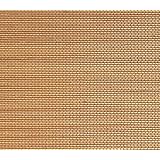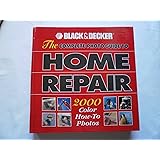The kitchen, often called the heart of the home, truly dictates a property’s overall perceived value and aesthetic appeal. As highlighted in the accompanying video, seemingly minor details can inadvertently cheapen your kitchen’s look, even with expensive initial investments. Understanding these common kitchen design mistakes is crucial for homeowners aiming to enhance their space. Whether you plan a full renovation or simply desire subtle, impactful upgrades, addressing these errors ensures a high-end kitchen aesthetic. This article delves deeper into design principles that elevate your culinary domain, transforming it into a space buyers will truly covet.
Eliminating Common Kitchen Design Mistakes
Achieving a sophisticated kitchen design goes beyond selecting premium materials. It involves a discerning eye for detail and a comprehensive understanding of how individual elements interact. Many homeowners overlook subtle cues that detract from a kitchen’s overall grandeur. By systematically addressing these common pitfalls, you can craft a space that exudes luxury and boosts home value. Real estate experts consistently observe these issues, noting their significant impact on buyer perception. Avoiding these errors is a strategic move for any homeowner.
Refining Your Kitchen’s Lighting Strategy
Lighting is paramount in kitchen design; it sets the entire mood and enhances functionality. A single, solitary ceiling fixture, often a builder-grade flush mount, creates stark shadows and an uninviting ambiance. This setup rarely provides adequate illumination for task areas. Architectural lighting design employs layers for optimal effect. Consider three primary layers: ambient, task, and accent lighting.
Ambient lighting, typically from recessed fixtures, provides general illumination. Task lighting, like under-cabinet LED strips or pendants over an island, brightens work surfaces directly. Undermount cabinet lighting is a prominent trend, offering a soft, functional glow without harshness. Accent lighting highlights architectural features or decorative elements. The goal is a bright, warm, and flattering environment, not a stark, sterile interrogation zone. Integrate dimmers for flexible control, allowing you to adjust the Kelvin temperature and brightness to suit different moods or times of day.
Elevating Your Space with Premium Hardware
Cabinet hardware serves as the kitchen’s jewelry, significantly influencing its perceived quality. Generic, flimsy knobs and pulls instantly betray a budget-conscious approach. Upgrading these elements offers one of the most cost-effective ways to inject sophistication. Consider the material, weight, and finish of your hardware. Solid brass, brushed nickel, or matte black options offer a substantial feel and a refined visual texture. The tactile experience of quality hardware is undeniable.
Beyond aesthetics, consider ergonomic design. Choose pulls that are comfortable to grasp. A cohesive hardware selection across all cabinetry creates visual harmony. Experiment with different styles—knobs for upper cabinets, pulls for lower ones—to add subtle interest. This seemingly small detail registers strongly with discerning eyes, instantly elevating the entire ensemble.
Achieving Cohesive Material Finishes
The strategic mixing of metal finishes can add depth and interest to a kitchen. However, a haphazard blend of too many disparate materials—gold, silver, bronze, black, chrome—results in visual chaos. This lack of a unified material palette makes the kitchen appear disjointed and, frankly, cheap. Successful material integration adheres to a clear design strategy, typically limiting the primary metal finishes to one or two complementary options.
Current trends favor brushed gold and matte black, which pair beautifully with white cabinetry or rich wood tones. Ensure consistency across faucets, light fixtures, and cabinet hardware. A thoughtful approach to material selection creates a sophisticated, cohesive environment. This intentionality communicates a high-end design sensibility. The entire kitchen should feel unified, not like a collection of random purchases.
The Transformative Power of a Thoughtful Backsplash
A bare wall behind the counter leaves a kitchen feeling unfinished and lacking character. Similarly, the ubiquitous four-inch lip backsplash, often installed by builders, looks dated and cheap. This minimal treatment fails to provide sufficient wall protection and aesthetic impact. A full-height backsplash, extending from the countertop to the upper cabinets or ceiling, offers a significant design upgrade. It acts as a visual focal point, grounding the kitchen’s aesthetic.
Material choices range from classic subway tile to natural stone, patterned ceramics, or even slab backsplashes for a truly luxurious feel. Select a material and pattern that complements your chosen countertops and cabinetry, ensuring long-term appeal. While trendy patterns offer immediate impact, classic designs with timeless colors ensure your kitchen remains elegant for years. A well-executed backsplash signals intentional design and attention to detail, significantly boosting your kitchen’s perceived value.
Upgrading to Substantial Countertops
Thin, glossy granite slabs, prevalent in early 2000s builder-grade homes, instantly date a kitchen. Modern design favors countertops with a more substantial profile, conveying a custom, high-end feel. Thickened edges, often 2 to 2.25 inches, create a robust and luxurious appearance. Materials like quartz, natural stone (marble, quartzite), or even high-quality solid surface options are popular choices. These materials offer superior durability and a refined aesthetic compared to their outdated predecessors.
Consider sophisticated edge profiles like eased or mitered edges for a clean, contemporary look. Waterfall edges, where the countertop material extends vertically down the side of an island, create a dramatic, architectural statement. Even budget-friendly laminate options, when featuring a thicker edge, can emulate a more expensive slab. The visual weight and quality of your countertop material are critical components in conveying a bespoke kitchen design.
Modernizing with Updated Fixtures
Outdated faucets and light fixtures act as anchors, dragging down an otherwise updated kitchen. These elements are the accessories of your culinary space, and their style and finish are paramount. Flimsy, builder-grade faucets not only look cheap but often lack durability and optimal functionality. Swapping them for a modern, substantial faucet can make a dramatic difference. Options include sleek pull-down sprayers, bridge faucets, or even touch-activated smart faucets, available in contemporary finishes like brushed brass, matte black, or polished chrome.
Similarly, light fixtures over islands, dining areas, or within general illumination schemes should reflect a current design sensibility. The video specifically mentions a large fixture with matte black and gold finishes, emphasizing its modern impact. Coordinating faucet finishes with cabinet hardware and light fixtures creates a harmonious and intentionally designed kitchen. Small details, like these updated fixtures, contribute significantly to a sophisticated aesthetic.
Strategic Appliance Integration and Placement
The placement of appliances profoundly impacts a kitchen’s visual continuity and functionality. An over-the-range microwave, a common builder-basic shortcut, visually clutters the cooking area. It obstructs the range and often performs less efficiently than dedicated range hoods. Furthermore, heat and steam from the cooktop can shorten the microwave’s lifespan. Modern kitchen design favors integrated solutions that keep the cooking area sleek and allow the range hood to serve as a focal point.
Consider microwave drawers, built-in wall microwaves (often paired with an oven), or dedicated shelf installations. These alternatives declutter the range area, enhancing both aesthetics and ventilation efficiency. Another common eyesore is the standard-depth refrigerator that protrudes significantly past cabinetry. This breaks clean sightlines and makes a kitchen feel less custom. Counter-depth refrigerators, designed to sit flush with standard cabinets, create a seamless, built-in appearance. While they may offer slightly less internal capacity, the aesthetic continuity they provide is a hallmark of high-end kitchen design. Prioritize this integration for a truly custom look, even if it means a minor adjustment in storage habits.
Embracing Single Basin Sinks for Enhanced Functionality
The traditional double sink, while once popular, has largely given way to the single basin sink in modern kitchen design. Many homeowners, initially surprised by this trend, quickly discover the superior functionality of a large, single basin. It accommodates oversized pots, baking sheets, and cutting boards with ease, simplifying washing and cleanup tasks. This enhanced utility streamlines kitchen operations and prevents awkward maneuvers with large items. A single basin also presents a cleaner, more expansive visual. Material options abound, including durable stainless steel, classic fireclay farmhouse sinks, or elegant granite composite sinks (like Blanco) in various sophisticated colors.
While double sinks still have their proponents, the current preference for single basins reflects an evolution in kitchen utility. The ability to soak or wash large items without obstruction contributes significantly to a high-performance kitchen. Opting for a single basin elevates both the functional capacity and the visual sophistication of your sink area. It represents a subtle yet impactful shift in kitchen aesthetics and practicality.
The Impact of Color on Kitchen Perception
Color choice profoundly affects a kitchen’s atmosphere and perceived age. Dingy whites, faded yellows, or excessively trendy, poorly aging colors can make an otherwise well-appointed kitchen look tired and unkempt. The wrong paint color on walls, or more significantly, outdated cabinet colors, can severely date your space. Modern kitchen design gravitates towards fresh, neutral tones for walls, providing a timeless canvas. Color can then be introduced strategically through artwork, dishes, or fresh floral arrangements, offering flexibility and easy updates.
Outdated cabinet finishes, such as honey oak, dark mahogany, or cherry, are immediate giveaways of an older kitchen. These heavy, often shiny wood tones instantly reduce perceived value. Current trends favor bright, airy kitchens, often featuring white or muted neutral cabinetry. Natural wood tones, particularly white oak, are experiencing a resurgence, sometimes mixed with painted cabinets for a sophisticated two-tone effect. Embracing these cleaner, lighter palettes ensures your kitchen feels contemporary, expansive, and inviting. Avoiding dark, dated wood tones is a critical step in modernizing your kitchen’s overall aesthetic.











